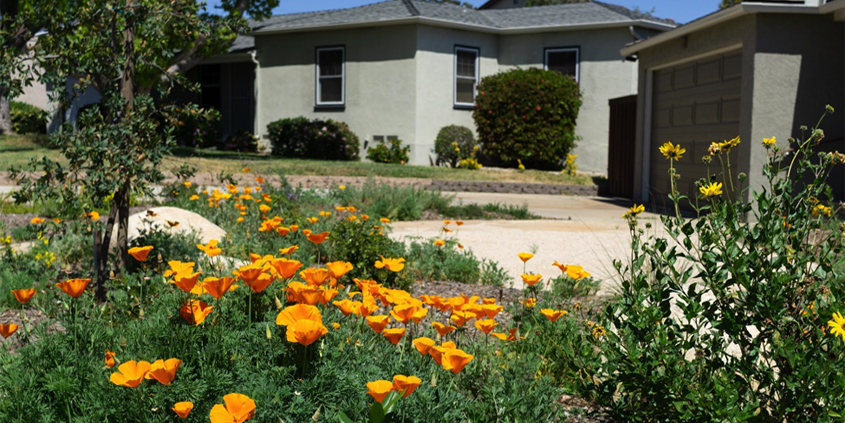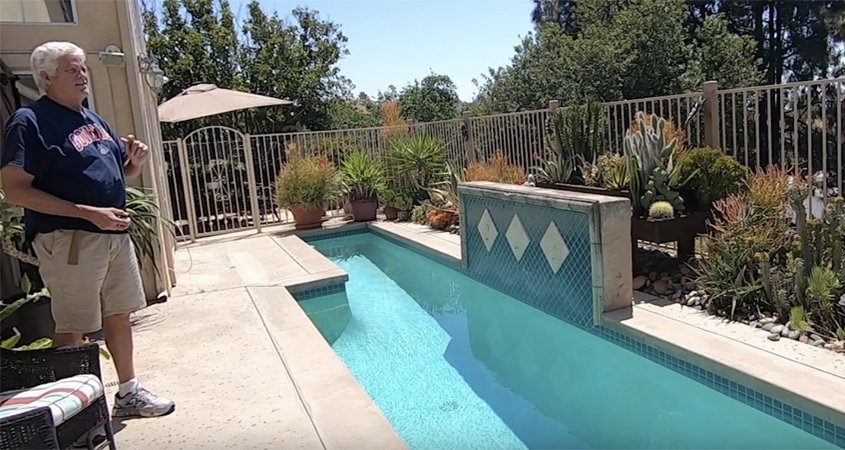 Even though this new WaterSmart Living landscape is only four months old, it is already in full bloom with California native plants. Photo: Helix Water District
Even though this new WaterSmart Living landscape is only four months old, it is already in full bloom with California native plants. Photo: Helix Water DistrictDesigning Your WaterSmart Living Landscape to Fit Your Life
When designing your WaterSmart Living landscape, you want your new outdoor space to fit your house, your neighborhood, and your lifestyle. Finding that fit begins by asking a few basic questions.
First, how do you want to use your space? It’s possible to significantly improve your home’s water efficiency and meet your lifestyle needs at the same time. For example, you may want to use less water yet maintain some turf for your children and pets. Focusing most of your landscape plan on low and moderate water use while leaving a small area of turf with high-efficiency irrigation lets you achieve a WaterSmart landscape.

The Hausmanns award-winning landscape makeover also produces succulents sold to benefit a good cause. Photo: Vallecitos Water District
If your goal is an outdoor space for entertaining, use mostly low water plants, a water feature, and a moderate efficiency irrigation system for a different type of WaterSmart Living landscape.
You can reduce water use, minimize maintenance and create a landscape that will be the envy of your neighbors with a combination of very low and low water use plants and a highly efficient irrigation system.
Consider alternatives to traditional turf grass such as low-water-use groundcover and mulch, or permeable hardscape like gravel or decomposed granite paving wherever possible. But if an area of turf is important to your family – for example, a play area for your kids and pets – keep it but use a more drought-tolerant variety of grass in the warm season turf category.
Video: Learn more about how turf can be part of a WaterSmart design
Your Overall Planting Design
Before you start selecting plants, envision your overall planting design. Determine your landscape style and think in terms of plant size and characteristics before moving into actual plant selection.
Take some time to consider the style of landscape you find appealing. Think about how it fits your home’s architecture, your neighborhood, and your lifestyle. You might find a heavy tropical look appealing. But it requires careful low-water-use plant selection for the arid San Diego region.
San Diego shares its climate with many areas of the world, and there are many plant palettes to choose from.
Consider Your Views and Access
Plants can be used to screen views. Would blank walls or fences look better with a nice-looking shrub in front of them? You can frame the view out a window, but you probably don’t want a large shrub blocking the view.
Plants can also create access points. Is access from the side of the house needed to take garbage cans to the curb? If so, make sure you accommodate a safe pathway in your design.
__________________________________________________

(Editor’s Note: The San Diego County Water Authority and its 24 member agencies offer programs, resources, and incentives to improve water-use efficiency for residential, commercial, and agricultural users. WaterSmart choices are a way of life in the region. Stay WaterSmart San Diego! For more water-use efficiency resources, go to WaterSmart.SD.org.)


